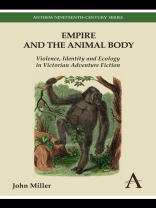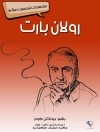‘Empire and the Animal Body: Violence, Identity and Ecology in Victorian Adventure Fiction’ explores representations of exotic animals in Victorian adventure fiction, mainly in works by R. M. Ballantyne, G. A. Henty, G. M. Fenn, Paul du Chaillu, H. Rider Haggard and John Buchan. These primary texts are concerned with Southern and West Africa, India and what is now Indonesia in the period 1860–1910, an era which comprises imperial expansion, consolidation and the beginnings of imperial decline. Representations of exotic animals in such literary works generally revolve around portrayals of violence, either in big-game hunting or in the collection of scientific specimens, and draw on a range of literary sources, most notably romance, natural history writing and ‘penny dreadful’ fiction.
This study investigates how these texts’ depictions of forms of violence complicate the seemingly fundamental distinction of humans from animals, and undermines the ideological structures of imperial rule. Rather than an innate and hierarchical opposition, the relationship of humans with their animal others emerges in this context as a complex interplay of kinship and difference. This argument both continues the postcolonial dismantling of empire’s logic of domination and develops the recentering of the nonhuman in environmentally focused criticism. Most vitally, it also signals the relation between these fields: the necessary interdependence of human and nonhuman interests, environmental activism and global social justice.
Зміст
List of Illustrations; Acknowledgments; Introduction; Chapter 1: Otherness and Order; Chapter 2: Scientists and Specimens; Chapter 3: The Animal Within; Chapter 4: Wild Men and Wilderness; Conclusion; Bibliography; Index
Про автора
John Miller is currently a lecturer in nineteenth-century literature at the University of Sheffield. He has published widely on animal studies and ecocriticism, particularly in relation to British Empire writing and postcolonial studies.












